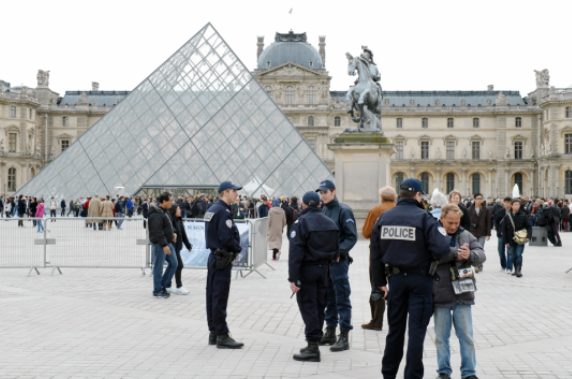Nine priceless jewels vanish from Napoleon’s collection — and the art world stands still once again.
Thieves used a basket lift to reach the upper level of the Louvre Museum on Sunday morning, stealing nine pieces from the jewelry collection of Napoleon and the Empress. The audacious heist unfolded in the Galerie d’Apollon — home to part of the French Crown Jewels — even as tourists wandered below. Within minutes, the museum was sealed, and visitors were ushered out as police took control.
It was a moment of déjà vu for the Louvre, a museum that has seen its fair share of both beauty and betrayal.
While we don’t hear about Jewel thieves and museum heists except for in the movies, we have compiled a list of high-profile heists that have occurred in the world of art.
When the Mona Lisa Went Missing
In 1911, the world’s most famous smile vanished. Vincenzo Peruggia, a former Louvre employee, hid overnight inside the museum and walked out the next morning with Leonardo da Vinci’s Mona Lisa tucked beneath his coat.
Recovered two years later in Florence, the theft transformed the painting into an icon. What was once admired became legendary — proof that loss, too, can create fame.
America’s Great Art Mystery
Across the Atlantic, Boston’s Isabella Stewart Gardner Museum still carries the scars of the largest unsolved art heist in U.S. history.
In 1990, two men disguised as police officers tied up guards and spent over an hour stealing 13 irreplaceable works by Rembrandt, Vermeer, and Degas — an estimated half-billion dollars’ worth of art.
The empty frames still hang on the walls, silent tributes to what once was.
Germany’s Twin Heists: Gold and Diamonds
Europe, too, has played host to modern-day thieves of cinematic caliber.
In 2017, Berlin’s Bode Museum lost the 220-pound “Big Maple Leaf” — a solid-gold coin worth over $4 million. Inside help was later confirmed.
Just two years later, Dresden’s Green Vault was hit by thieves who made off with diamond-encrusted royal jewels valued at hundreds of millions.
Although part of the treasure was eventually recovered, the message was clear: even centuries-old institutions must evolve or be left exposed.
The Golden Toilet That Shocked the World
In 2019, Blenheim Palace — the birthplace of Winston Churchill — became the scene of one of Britain’s strangest heists.
Thieves stole an 18-carat solid gold toilet titled America, a satirical artwork by Italian artist Maurizio Cattelan. The piece, valued at $6 million, was ripped from its plumbing, flooding the palace in the process.
It has never been found, and experts believe it was melted down and sold.
“Some steal art to possess it. Others steal it to destroy what it represents.”
The Psychology of the Art Thief
Art theft is rarely about profit alone. The black market for iconic works is small, the risks immense — yet thieves return again and again.
Why? Because for many, it’s not about possession but validation. To take what others only worship is to rewrite the story of who holds power.
These thieves share traits with the artists they rob: intelligence, obsession, and audacity. But instead of creating, they seek control. They want the legend, not the loot. “They don’t just want the painting — they want the story that comes with it.”

